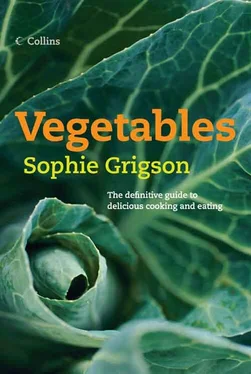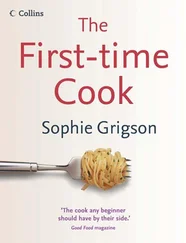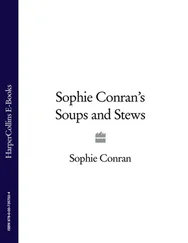1 ...7 8 9 11 12 13 ...22 It isn’t too clever to sell two different vegetables by the same name, even when they look virtually identical. However, for many years that is just what has been happening. When I was a child, the sweet potatoes that my mother brought home as an occasional treat were always white fleshed and we just adored them: roasted in their jackets until tender, then eaten slathered with salted butter.
More recently sweet potatoes have turned orange and soggy. In truth it is not a miraculous transformation, just that one (in my opinion slightly inferior) variety has replaced t’other. For a few transitionary years, you had no idea which you were buying, unless you scratched away the skin to inspect the underlying colour. Anyone with the slightest bit of sense would have seen that these vegetables should be called by different names, and at last that seems to have happened, with the happy reintroduction of the white-fleshed sweet potato, a.k.a. the kumara, to this country.
The word ‘kumara’ comes from the Maori name for the white-fleshed Ipomoea batatas. They are, as you might well infer from this, extremely popular in New Zealand, and indeed in many places around the Pacific. Their country of origin is thought to be Mexico, where roast kumara are sold by street vendors, to be anointed with condensed milk and eaten as a pudding rather than a vegetable. Try it some time and see how good it is.
Kumara is also the sweet potato used widely in the Caribbean for making pies and dumplings. The orange-fleshed sweet potato is not a good substitute here, as the flesh is too watery and lacks the necessary starch to bind ingredients together.
So the point that I’m trying to make is this: kumara are downright gorgeous and you really should try them if you haven’t already. They are still not exactly commonplace but at least one of the larger supermarket chains is importing them regularly, and you may well find them in Caribbean food stores. Go search and you will be well rewarded.
If you have the choice, pick out kumara that are on the larger side, with firm, smooth, dark pink-brown skin. Bruises and soft patches, as always, warn you to steer clear. Cut ends will be a dirty greyish colour, but don’t let this bother you – it’s just a spot of oxidisation, not a sign of something disturbing.
Kumara like to be kept in a cool, airy, dark spot, which is not the fridge. Over-chilled kumara develop a tougher centre, at least that’s what producers say. In practice, I’ve found that a day or two in the fridge doesn’t make any noticeable difference to the texture once cooked, which is handy if you don’t happen to have a cool, airy, dark spot to hand. Better the fridge, I find, than a warm kitchen where they are likely to start sprouting.
Longer term storage (they should keep nicely for up to a fortnight) and you really ought to treat them as they prefer – try wrapping them individually in a couple of sheets of newspaper to exclude light and absorb any humidity in the air.
In terms of preparation, remarkably little is required. Give them a rinse, trim off discoloured ends and voilà, one kumara ready for the pot.
Or the oven. Which is exactly where you should start if you have never eaten kumara before. Just don’t stall there, as many people do. Yes, bakedkumara are delicious, but that’s first base. You bake them just as if they were ordinary potatoes, in other words, prick the skin and then put them straight into the oven at somewhere around 180–200°C/350–400°F/Gas 4–6. Size will dictate how long they take to cook, but think in the region of 45–60 minutes. Split them open and serve with salted butter, or flaked Parmesan or Cheddar, or a great big dollop of Greek-style yoghurt. Remember that if you are eating them with the main course, you will need to partner them with something salty – I find that they are rather good with bacon, or even with tapenade. Excellent, too, with sausages.
Americans and New Zealanders like to surmount their baked kumara with other sweet things like pineapple, grated apple or dates (hmmm), or drizzle orange juice over them, which makes far more sense to me.
So, once you’ve done the oven experience, it’s time to move on. Kumara can be cooked in most of the ways that suit potatoes, i.e. sautéed, chipped, roast, mashedor boiled(a bit dull, frankly). Additionally, kumara can even be eaten raw, or transformed into pudding. I’ve tried it raw, grated into a salad. It’s okay, but not something to write home about. Pudding, on the other hand, is a natural end for the chestnutty kumara. Think that’s odd? Just try making a kumara fool (see recipes) and then tell me that it’s not pretty impressive.
In recent days, I’ve sautéed cubes of kumara with diced spicy chorizo, which was very successful, and then taken more sautéed kumara and tossed it with rocket and feta and a vigorous lime juice, chilli and sunflower oil dressing to serve as a first course. Mashed kumara are good on their own, seasoned fully to balance the sweetness, or speckled with finely chopped spring onion or coriander. I rather fancy a smoked haddock fish cake held together with cooked kumara (slightly more smoked haddock than kumara, I think), though I haven’t tried it yet.
Also good, and I say this from experience, is a kumara cake– just substitute grated kumara for the carrot in the recipe on page 28. Fantastic.
SEE ALSO SWEET POTATOES (PAGE 91).
Smoky Parmesan roasted kumara cubes
Just damn gorgeous, these are. They’re wolfed down by one and all whenever I make them. There is something utterly irresistible about the combination of sweet kumara with a salty, crisp cheesy crust and a hint of hot smoke from the Spanish pimentón. They probably should go with something (a real burger, perhaps, or roast pheasant) but you might just make them as a snack when the right moment comes.
Serves 6
600g (1 lb 5oz) kumara
30g (1 oz) Parmesan, freshly grated
1 heaped teaspoon Spanish smoked paprika (pimentón)
3 tablespoons olive oil
salt
Preheat the oven to 200°C/400°F/Gas 6. Cut the kumara into 2 cm (scant 1 in) cubes. Blanch in boiling salted water for 4 minutes, then drain thoroughly. Toss with the Parmesan, paprika, salt and oil.
Put a roasting tin or baking tray in the oven for 5 minutes to heat through really well. Take out of the oven and quickly tip the kumara on to the hot tray. Spread out in a single layer, then dash it back into the oven before the tray loses any more heat. Roast for 20 minutes, turning once, until golden brown and tender. Eat while still hot, but not so hot that they burn your mouth.
The Brits tend to like their kumara and sweet potato served along with the main course, salted and savoury, but they are in fact sweet and suave enough to work nicely in puddings. And if you don’t believe me, just give this one a try.
Mashed with cream and eggs, kumara become as smooth as butter. Add a little heat and they bake to form a tender custardy mixture that is perfect topped with a crisp crust of sugar. Although many traditional recipes partner them with cinnamon and other warm spices, I prefer to add vanilla to highlight their chestnut-like taste.
Serves 6–8
1 kg (21/4 lb) kumara, give or take
30g (1 oz) unsalted butter
30g (1 oz) caster sugar
Читать дальше












